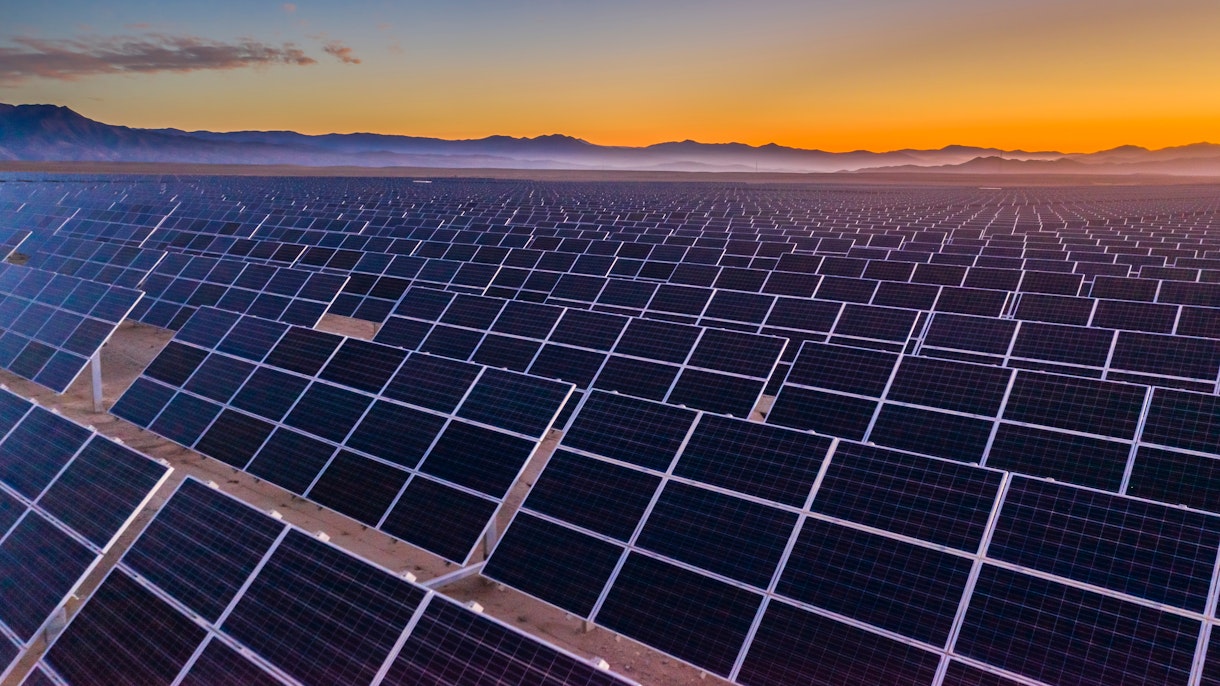Massive expansion of renewable power opens door to achieving global tripling goal set at COP28
News

World added 50% more renewable capacity in 2023 than in 2022 and next 5 years will see fastest growth yet, but lack of financing for emerging and developing economies is key issue
The world’s capacity to generate renewable electricity is expanding faster than at any time in the last three decades, giving it a real chance of achieving the goal of tripling global capacity by 2030 that governments set at the COP28 climate change conference last month, the IEA says in a new report.
The amount of renewable energy capacity added to energy systems around the world grew by 50% in 2023, reaching almost 510 gigawatts (GW), with solar PV accounting for three-quarters of additions worldwide, according to Renewables 2023, the latest edition of the IEA’s annual market report on the sector. The largest growth took place in China, which commissioned as much solar PV in 2023 as the entire world did in 2022, while China’s wind power additions rose by 66% year-on-year. The increases in renewable energy capacity in Europe, the United States and Brazil also hit all-time highs.
The latest analysis is the first comprehensive assessment of global renewable energy deployment trends since the conclusion of the COP28 conference in Dubai in December. The report shows that under existing policies and market conditions, global renewable power capacity is now expected to grow to 7 300 GW over the 2023-28 period covered by the forecast. Solar PV and wind account for 95% of the expansion, with renewables overtaking coal to become the largest source of global electricity generation by early 2025. But despite the unprecedented growth over the past 12 months, the world needs to go further to triple capacity by 2030, which countries agreed to do at COP28.
Alongside the report, the IEA also released a new Renewable Energy Progress Tracker, which allows users to explore historical data and forecasts at the regional and country level, including tracking progress towards the tripling goal.
“The new IEA report shows that under current policies and market conditions, global renewable capacity is already on course to increase by two-and-a-half times by 2030. It’s not enough yet to reach the COP28 goal of tripling renewables, but we’re moving closer – and governments have the tools needed to close the gap,” said IEA Executive Director Fatih Birol. “Onshore wind and solar PV are cheaper today than new fossil fuel plants almost everywhere and cheaper than existing fossil fuel plants in most countries. There are still some big hurdles to overcome, including the difficult global macroeconomic environment. For me, the most important challenge for the international community is rapidly scaling up financing and deployment of renewables in most emerging and developing economies, many of which are being left behind in the new energy economy. Success in meeting the tripling goal will hinge on this.”
“This report is the first key instalment of the IEA’s follow-up work on the energy outcomes of COP28 that will continue throughout 2024 and beyond,” Dr Birol said. “This is based on the five key pillars we set out ahead of COP28 and covers tripling renewables, doubling energy efficiency, cutting methane emissions, transitioning away from fossil fuels, and scaling up financing for emerging and developing economies. We will be following very closely to see whether countries are delivering on their promises and implementing appropriate policies.”
What is needed to triple renewables by 2030 varies significantly by country, region and technology. The report lays out an accelerated case in which more rapid policy implementation drives renewable power capacity growth 21% higher than in the main forecast, which would push the world towards being on track to meet the global tripling pledge.
In advanced and large emerging economies, this would mean addressing challenges such as policy uncertainty in a fragile economic environment, insufficient investment in grid infrastructure to accommodate greater shares of renewables, and cumbersome administrative barriers and permitting delays. In other emerging and developing economies, access to finance, strong governance and robust regulatory frameworks are essential to reduce risk and attract investment, including establishing new targets and policies in countries where they do not exist yet.
Solar PV and onshore wind deployment through 2028 is expected to more than double in the United States, the European Union, India and Brazil, compared with the last five years. Prices for solar PV modules in 2023 declined by almost 50% year-on-year, with cost reductions and fast deployment set to continue. This is because global manufacturing capacity is forecast to reach 1 100 GW by the end of 2024, significantly exceeding demand. By contrast, the wind industry (outside of China) is facing a more challenging environment due to a combination of ongoing supply chain disruption, higher costs and long permitting timelines, which require stronger policy attention.
The report also provides a reality check on the momentum behind renewable-based hydrogen, assessing how many announced projects are likely to go ahead. Of all the projects announced worldwide to use renewables to produce hydrogen this decade, only 7% of the proposed capacity is expected to come online by 2030. The slow pace of projects reaching an investment decision combined with limited appetite from off-takers and higher production costs have led to slower progress on many projects. To fully convince investors, ambitious project announcements will have to be followed by consistent policies supporting demand.
In 2023, the role of biofuels has also come to the fore. Emerging economies, led by Brazil and India, are expected to drive 70% of global demand over the next five years as biofuels start to show their true potential in hard-to-abate sectors such as air travel and as a replacement for highly polluting fuels like diesel. While biofuels deployment is accelerating, the report shows that this is not happening quickly enough, with a significant increase required in demand by 2030 needed to align biofuels with a net zero pathway.